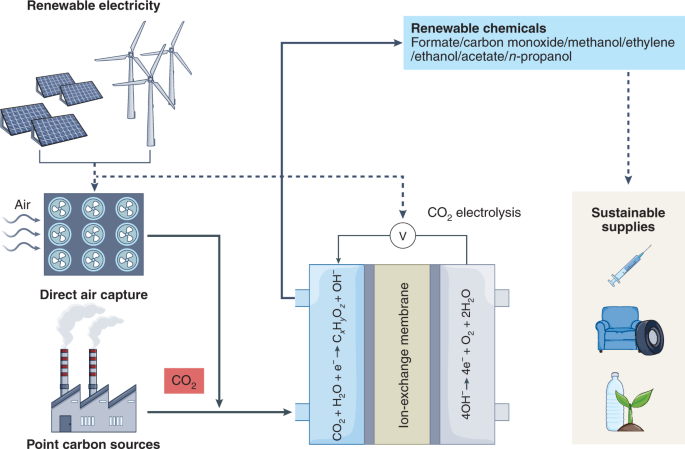The five-year anniversary of the Paris Agreement highlights the potential for catalysis to convert carbon dioxide (CO 2 ) into marketable products to address the urgent need to reduce global greenhouse gas emissions. Carbon capture, utilization and storage (CCUS) is widely acknowledged as among the most promising technologies to contribute to the goal negotiated in the agreement: to limit global warming to below 2 °C — preferably to below 1.5 °C — compared with pre-industrial levels1,2,3,4. Retrofitting existing power and industrial facilities with CCUS can avoid on the order of 600 Gt of CO 2 emissions over the next five decades, or around 17 times the annual emissions today2. If the future grid comprises abundant renewable energy, electricity can power electrocatalysis in negative emissions options and play an important role in managing emissions from hard-to-decarbonize sectors. The International Energy Agency anticipates 8% of CO 2 captured to 2070 could be converted into useful products — a number that may increase with breakthrough technologies. The focus of what to do with the captured CO 2 has so far been on geological storage rather than utilization. Moving beyond the present focus on geological storage, electrocatalysis represents a utilization option that nearing commercialization5 with favourable techno-economic assessments (TEAs) for specific products already prompting the construction of pilot projects.
https://www.nature.com/articles/s41929-021-00704-z
Electrocatalytic conversion of carbon dioxide for the Paris goals
